- Administrator
- Albums and Singles
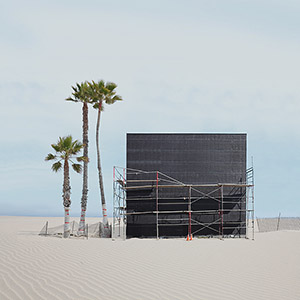 It is fair to say that Robert Crouch has injected some major conceptualism into A Gradual Accumulation of Ideas Becomes Truth. The overarching theme, outlined in the title, is how locations can develop histories that never existed based simply on someone's insistence they happened, a process akin to that of meaning devised by method of symbolic interactionism. That concept applies appropriately to the recorded material as well: a series of compositions based upon modular synthesis that largely avoids the now cliché bleeps and bloops and instead results in lush passages of electronics that form their own little worlds.
It is fair to say that Robert Crouch has injected some major conceptualism into A Gradual Accumulation of Ideas Becomes Truth. The overarching theme, outlined in the title, is how locations can develop histories that never existed based simply on someone's insistence they happened, a process akin to that of meaning devised by method of symbolic interactionism. That concept applies appropriately to the recorded material as well: a series of compositions based upon modular synthesis that largely avoids the now cliché bleeps and bloops and instead results in lush passages of electronics that form their own little worlds.
The conceptual linkage of the idea to the composition appears in the way in which Crouch created recordings via his modular synthesizer, but purposely only captured them via digital stereo recordings.Rather than making notes of the setup, he instead devised the patches and performance in such a way that he could not recreate them, and thus had only the final product to work with.Much like the architectural concept, he had only the final ideas to base the "truth" of this recording on.
The results of these ephemeral synth arrangements run the gamut from gentle to raw and significant ground in between."Hohle Fels" is one of the more placid pieces; beginning with gliding tones and light wisps of air painting a warm, open landscape.The tones slowly become lower register, casting a darker shadow, as the piece drifts to its conclusion.The warm tones are reprised on "Limbo Town (Croatoan)", but Crouch melds this darker drift with lightly crackling textures.The dissonance builds, and is eventually replaced with dour electronics that sound like a clearer passage from an old MB record.
"3184 Pullman, Costa Mesa, 1974" features Crouch working with more texture than tone.A bit of dissonant buzz and icy, frozen sheets of sound creep through like glaciers.Noises of what could pass for radio interference appear, with an almost rhythmic quality to them that contrasts the static and cold done very well."Bellona(Version 0-375-70668-2)" has Crouch employing a more overt bitcrusher-like effect to excellent effect.Its idiosyncratic distortion adds to the oddly intersecting layers.Eventually it is transitioned back to a rich, full-bodied sound, but for a period it sounds as if it is emanating from a deep, dank basement.
The concluding "Potbelly Hill" begins with what could almost be mistaken for a droning electric guitar, sustained and frequently processed.It is an extremely dynamic piece, even though it is largely built around that shimmering tone.Crouch builds the intensity and then scales it back, blending together abstraction with almost melodic passages, closing the album on a gentle, peaceful note.
There is an odd mood throughout A Gradual Accumulation…; a sound that is ominous, but never off-putting.Coupled with Crouch’s use of spacious tones and subtle layering, he definitely achieves that architectural effect he was aiming for.The depth and mood conveyed in each of these pieces results in a theme, or almost a field recording, for a space that may have never existed.
samples:
 
Read More
- Administrator
- Albums and Singles
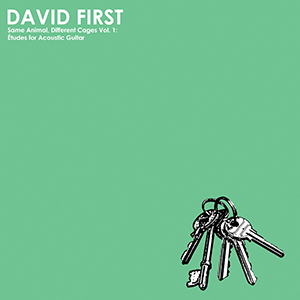 David First has been active as a composer for a multitude of years, never allowing his work to draw too heavily from just one style or technique. Many of his pieces feature elements of everything from folk to noise to classical drone, and almost everything in between. Because of that, the self-imposed limitations of the four part Same Animal, Different Cages adds additional depth by stripping much away. Etudes for Acoustic Guitar is exactly as its title implies: 12 performances utilizing only a Guild D-40 acoustic guitar, and the final product is diverse, compelling, and at times challenging, but a resounding success.
David First has been active as a composer for a multitude of years, never allowing his work to draw too heavily from just one style or technique. Many of his pieces feature elements of everything from folk to noise to classical drone, and almost everything in between. Because of that, the self-imposed limitations of the four part Same Animal, Different Cages adds additional depth by stripping much away. Etudes for Acoustic Guitar is exactly as its title implies: 12 performances utilizing only a Guild D-40 acoustic guitar, and the final product is diverse, compelling, and at times challenging, but a resounding success.
The expected styles we in the Western world associate with First's instrument of choice can be heard throughout this record, unsurprisingly.Folksy strumming and country twangs appear throughout "Etude #4" and "Etude #7", respectively.However, it is First's approach to creating these overly familiar sounds that makes this record what it is.On the former, he applies just enough pitch bends (I assume by adjusting string tension) to result in an uneasy, "not right" feeling, defying what is expected of regarding tone and tuning.For "Etude #7", he applies the twang effect to an almost comical extreme, resulting in a cartoon-like "boing" spring sound that adds a bit of playfulness to the piece.
"Etude #15" features a blues like progression that, again, with his unconventional approach to pitch and tone results in a very unique sound due to its inherent off-kilter-ness.First is happy to defy expectations many times on this record, which is a significant asset.Scattered throughout the album as a whole are sitar-like tones and frequencies that present a definitively Eastern influence to the otherwise Western-centric instrument and overall sound.
The most fascinating moments are the ones in which his background as a minimalist composer (in the classical sense) shines through the most."Etude #17" is full of cyclic playing and bits of improvised percussion, blending guitar plucks and strums into hypnotically repetitive motifs.Appropriately, however, he changes up the tempo a few times with brilliantly jarring effect.For "Etude #5", First locks his playing into a buzzing, insistent throb that does not relent.The psycho-acoustic properties of this cause the sound to resemble anything but a guitar, and the buzzing of the strings themselves seems to become a different instrument.The final "Etude #31" comes from a similar compositional tactic, and by the end it sounds more like a pulsing synthesizer than a mere acoustic guitar.
Throughout Etudes for Acoustic Guitar, David First works in some clear bits of playfulness and at times difficult moments of sound.His use of the tuning pegs to bend the pitches of strings results in an occasionally uncomfortable edge, and his intentional shifting of rhythms and tempos mid-performance leads to things sounding a bit "off" at times.However, it is for these reasons that the album shines, being a rather unique, creative take on such a ubiquitous instrument.The remaining three "cages" he has chosen to lock himself into for the remainder of the series (synthesizer, harmonica, and sitar) are a diverse enough array that, given his idiosyncratic approach, should make for three more excellent records.
samples:
 
Read More
- Administrator
- Albums and Singles
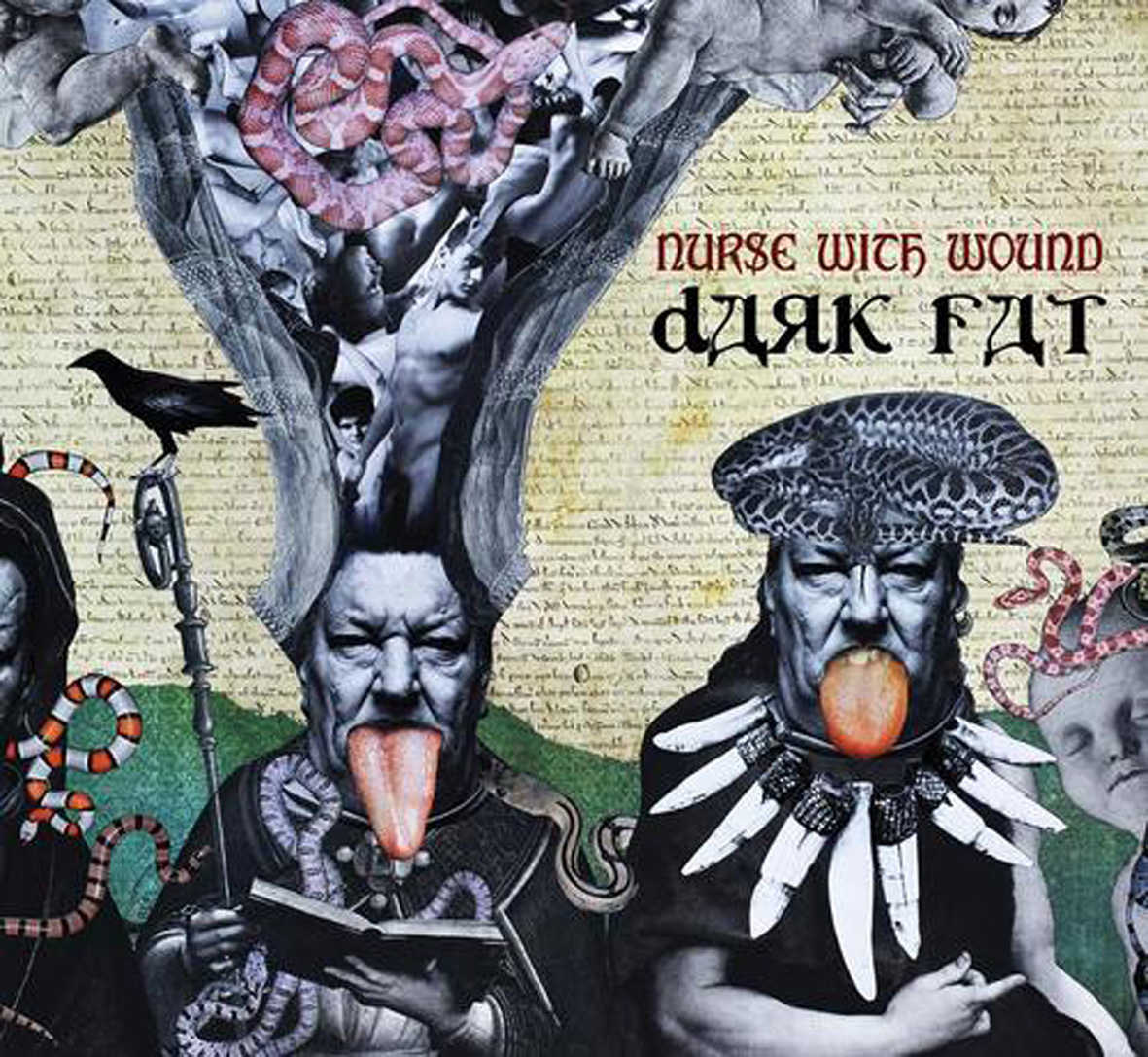
I gave up trying to make sense of Nurse With Wound’s sprawling, self-cannibalistic, and absolutely inscrutable discography quite some time ago, but it definitely seems like it has been a very long time since Steven Stapleton has released anything that meets my not-particularly-stringent "this is an actual, legitimate new album" criteria (excellent Graham Bowers collaborations aside, of course).  Consequently, I was hoping Dark Fat would be the album to end NWW's long and perversely prolific silence (it was explicitly billed as "long-awaited," after all).  Alas, it is not exactly the bold new artistic statement that I was hoping for.  Instead, it is a sprawling collection of "live" recordings ranging from rehearsals to sound checks to actual gigs.  Despite its dubious hodge-podge origins, however, Dark Fat actually feels an awful lot like a studio album–quite a damn good one, even.  While longtime NWW fans will probably experience many flickers of recognition over the course of these two hours, Stapleton and his collaborators have so thoroughly reshaped and recontextualized everything that it all feels fresh, vibrant, inspired, and appropriately disorienting all over again.
The best way to summarize this album is to say that it feels like Steven Stapleton assembled an entire village-worth of like-minded artists for a very abstract and cavalier traipse through some of NWW’s greatest hits.  In a way, I suppose that is exactly what he did, but the twist is that it was a very fitful, slow-motion, and "revolving door" process that spanned six years.  In any case, aside from the core group of Stapleton, Colin Potter, Matt Waldron, and Andrew Liles, Dark Fat features a head-spinning roster of avant-garde luminaries in cameo roles ranging from Jacques Berrocal to Stephen O’Malley to James Blackshaw.  As if that were not enough, it also features some unwitting contributions from Klaus Schulze, Michael Schenker, and Cream’s Jack Bruce (if the roll call during the final untitled track is to be believed).  Clearly, even the deceased were clamoring to get in on this party.  Naturally, that deranged eclecticism extends to the instrumentation as well, covering everything from Hawaiian guitars to saxophones to cornets to smoke bombs.  Given all that, it is unsurprising that Dark Fat is a deliciously difficult album to wrap my head around, as it is massive, freewheeling, and kaleidoscopic in the extreme.
Lamentably, I do not have total recall of NWW's entire back catalog (does anyone?), so the only real "hit" that jumps out at me is "Rock’n Roll Station," which turns up twice in impressively mangled form.  On "Rock n Rolla 1959," the original groove is transformed by the addition of a laid-back bass line and a bizarre, stream-of-consciousness monologue from Jacques Berrocal.  Later, on the untitled album finale, the band reprises the song in more recognizable form, but stretches it out into a lazy 9-minute jam peppered with squalls of wah-wah guitar, hard rock shredding, stage banter, and bouts of extreme noise chaos.  If any one piece can be said to represent the entirety of Dark Fat in microcosmic form, it is undoubtedly that one, as a recurring theme throughout the album seems to be hallucinatory abstraction coupled with amusing nods to conventional rock tropes.  The lion’s share of the album, however, just feels like an amorphous and unpredictably evolving collage of everything NWW does best: ominous ambience, garbled vocal cut-ups, odd juxtapositions, snatches of old exotica records, and a host of electronic blurts and squiggles.  The sole significant exceptions are "Devil Dreamin’" and "Devil is this the Night," as Huffin’ Rag Blues vocalist Lynn Jackson returns for a satanic pair of blearily soulful noir-jazz numbers that actually feel like legitimate songs.  In addition to being the album’s finest moments, the Jackson pieces highlight yet another recurring theme that pervades this collection, which is inventively recalling the spirit of a previous NWW highlight rather than just explicitly reprising it.  Consequently, much of Dark Fat feels simultaneously new and familiar, like hearing some lost outtakes from a favorite album.
Naturally, a two-hour retrospective of soundchecks and rehearsals is going to have some faults, but Dark Fat actually has far fewer flaws than I would have expected.  The worst offenses are probably just that a few pieces overstay their welcome and that the band was definitely in a very self-indulgent mood at times.  Also, the variations on "Rock’n Roll Station" are not nearly as good as the original, though the intent was clearly aimed towards gleefully pulling it apart and détournement rather than something as banal as improvement.  A far more fascinating subject is how Stapleton inventively makes a virtue of Dark Fat’s flaws, as this seems like a totally phoned-in album on paper.  In reality, however, this eclectic, free-form grab-bag is actually one of the strongest NWW albums in recent memory.  It is not definitely not new for high art, low art, homage, surrealist lunacy, impish humor, and just general dicking around to all coexist on a Steven Stapleton album, but it rare for them all to do so quite this effectively and naturally.  Dark Fat is essentially an unexpectedly brilliant editing tour de force, masterfully distilling a large part of NWW’s bizarre and wide-ranging legacy into richly textured fever dream of an album.
 
Read More
- Administrator
- Albums and Singles
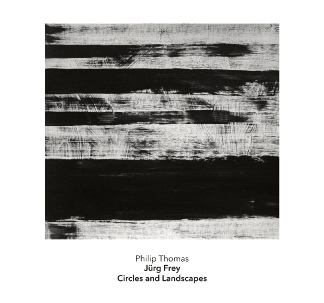 Given a little context, a mathematician could tell you what circles and landscapes have in common. They could at least begin by telling you that circles are musical. Traveling counterclockwise around a circle, it is possible to plot the contours of a sine wave on graph paper using a right triangle and a trigonometric ratio, something that is easier to see than to describe. At the same time, circularity is one of those compound notions that can’t be thought all at once. There’s the circularity of arguing in a circle and the circularity of spinning your wheels or going nowhere fast. There’s the circularity of "Frère Jacques" and "Three Blind Mice" and Pachelbel's Canon in D Major, the sense of arriving back at the beginning, and, given a little latitude, the circularity that implies incongruity, the problem of "squaring the circle." All of this to say that there is more to the title of the latest Jürg Frey solo piano collection than abstract poetry. Wrapped up in Philip Thomas’s firm and buoyant performances are ideas about translating music and arranging it and a compositional focus that foregrounds harmony, intentionality, and the voice of one of the world’s most familiar instruments.
Given a little context, a mathematician could tell you what circles and landscapes have in common. They could at least begin by telling you that circles are musical. Traveling counterclockwise around a circle, it is possible to plot the contours of a sine wave on graph paper using a right triangle and a trigonometric ratio, something that is easier to see than to describe. At the same time, circularity is one of those compound notions that can’t be thought all at once. There’s the circularity of arguing in a circle and the circularity of spinning your wheels or going nowhere fast. There’s the circularity of "Frère Jacques" and "Three Blind Mice" and Pachelbel's Canon in D Major, the sense of arriving back at the beginning, and, given a little latitude, the circularity that implies incongruity, the problem of "squaring the circle." All of this to say that there is more to the title of the latest Jürg Frey solo piano collection than abstract poetry. Wrapped up in Philip Thomas’s firm and buoyant performances are ideas about translating music and arranging it and a compositional focus that foregrounds harmony, intentionality, and the voice of one of the world’s most familiar instruments.
Credit should be given to Simon Reynell and everyone involved for the interviews posted to the Another Timbre website with each new album. In addition to being excellent resources on their own, they serve as exceptional liner notes, offering different perspectives on the music without forcing one interpretation or another down anyone’s throat. Gil Sansón and Jürg Frey’s conversation around Circles and Landscapes is a perfect example. In just a few words they complicate the idea of a solo piano record by opening up the writing process behind it. Frey compares composing for piano to composing for stones and leaves and then quickly moves to the question of translating ideas to music. What happens when a thought or an emotion is written down in eighth notes and pitches? Do the formal elements of a piece command an idea or is it the other way around? Is classical harmony a valuable tool or a hindrance that drags music-making into the patterns of the past?
Frey answers those questions in some of the same ways many composers before him have: his music is glassy, pleasant, sometimes eerie, and evocative. It’s emotional, almost romantic, like Erik Satie’s Gnossiennes are, and his sounds sometimes speak as if they contained latent narratives. Other answers come in the form of impenetrable repetitions and minor variations, stretches of music that float in a sea of even strokes and uneven spaces. The formal elements behind the music are difficult to ascertain in many cases because the music itself sounds like it could be improvised. And yet the use of repetition and the way Frey often limits himself to dyads and triads are the hallmarks of a rational process, of a mind that is putting the sounds where they belong. In each of his pieces, Frey balances a delicate combination of intuition and interest.
Time and movement eventually come to the fore just as the title promises, or maybe it’s the lack of time and the lack of movement. Either way, Frey deceives with long passages of static chords and single notes, he deals in illusions by stretching phrases well past the limits of most memories, and he cuts happy resolutions out of the picture even as he conjures his most affecting melodies. Colors, moods, and senses become the dominant elements of the music as the ideas of progression and intent fall away into a drift of endlessly shifting notes.
As paradoxical as it seems, that drift feels like the subject of this collection. All of Frey’s "Circular Music" pieces are numbered, and there’s more than one or two of them extant. There’s "Extended Circular Music No. 2" and "Circular Music No. 5" and, if you look through the rest of his discography, at least six more pieces sharing the same or a similar name, and probably many more still without a recorded home. Some rotate like beacons turning in the night, others hammer away at the silence behind them like a chisel. What they share is more than a compositional sensibility. There’s something more in the way they turn on themselves, transforming from obscure and obtuse to open and permeable and then back again. Frey’s circular writing produces a music that turns dichotomies into spectra, ink and paper into space and time.
samples:
 
Read More
- Administrator
- Albums and Singles
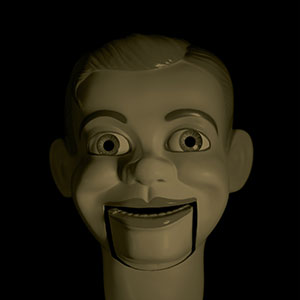 Jon Mueller may be most often recognized as an exemplary and audacious percussionist, but even the most casual experience with his recent works makes clear the depth of his creativity. On this latest album, he draws influences from his other projects (Death Blues, Volcano Choir), as well as builds upon the stylistic developments of his other recent works, such as the heavy use of vocals, to reach an unparalleled depth and complexity of composition.
Jon Mueller may be most often recognized as an exemplary and audacious percussionist, but even the most casual experience with his recent works makes clear the depth of his creativity. On this latest album, he draws influences from his other projects (Death Blues, Volcano Choir), as well as builds upon the stylistic developments of his other recent works, such as the heavy use of vocals, to reach an unparalleled depth and complexity of composition.
It is not hard to read into the multiple meanings of the title Tongues with regard to this record.Most evident is Mueller’s use of looped, wordless vocal passages as a primary source of sound, thus utilizing his own tongue as an instrument.While these two pieces are clearly propelled by his multidimensional drumming and percussion, the repeated vocals often take center stage.By extension, the wordless, otherworldly sounds created very much approximate the pseudo-religiousness of speaking in tongues.They are indecipherable but impassioned collections of sounds and syllables that, paired with the often primal and hypnotic drumming, come together as a religiously unspecific but fanatical bit of spirituality.
Tongues is a solo album, but Mueller is aided with contributions from Cory Allen (on harmonium, tanpura, and Amazonian ceremonial breath) and William Ryan Fritch (playing sarangi, and also a featured player on the last Death Blues recorded).The first half of the album, "How You Look When You're Not Looking" begins immediately with the faux tribal singing; layered and dense atop a simple, pounding drum line.Throughout its 15-minute duration, Mueller keeps the structure and sense of composition dynamic, layering vocal tracks while adding and subtracting instrumental passages.The balance is perfect, because he allows the different segments to repeat frequently enough to truly capture that hypnotic sense of ritualism, but never becoming too repetitive.Vocals change from sung ethnographic forgeries to deep, guttural chants.The second half especially begins taking on a lighter mood, buoyed by the more infectious handclap percussion that becomes more prominent.
The other half of the record, "What I Thought You Said" at first seems to show Mueller putting the focus of the composition back on his traditional percussive tendencies.First an interlocking passage of various chiming sounds, the piece is soon heavily defined by intense polyrhythmic percussion, with the initial vocal elements being dark but subtle accents.Soon, however, his voice appears again in the form of repeating mantras and pseudo-possessed babbling.Each element is a force to be reckoned with on its own, but blended together the piece becomes an intense, chaotic roar.Throughout its lengthy duration, however, the diversity in sound, instrumentation, and dynamics are entirely fascinating.
There are clear ties throughout Tongues to Jon Mueller's other most recent work:the cassette A Magnetic Center, which also featured him working with these same elements.While that release was no slouch at all, there seems to be a tighter focus here, almost a greater confidence in the inclusion of his voice in this style.Because of that, these two pieces have a complexity and richness that stand strongly amongst any of his previous releases.Recognition should also be given to the recording assistance from Shane Hochstetler, who captures every hit of a drum with a clarity and depth that is unrivaled, adding additional polish to an already shining release.
samples:
- How You Look When You're Not Looking (Excerpt 1)
- How You Look When You're Not Looking (Excerpt 2)
- What I Thought You Said
 
Read More
- Administrator
- Albums and Singles
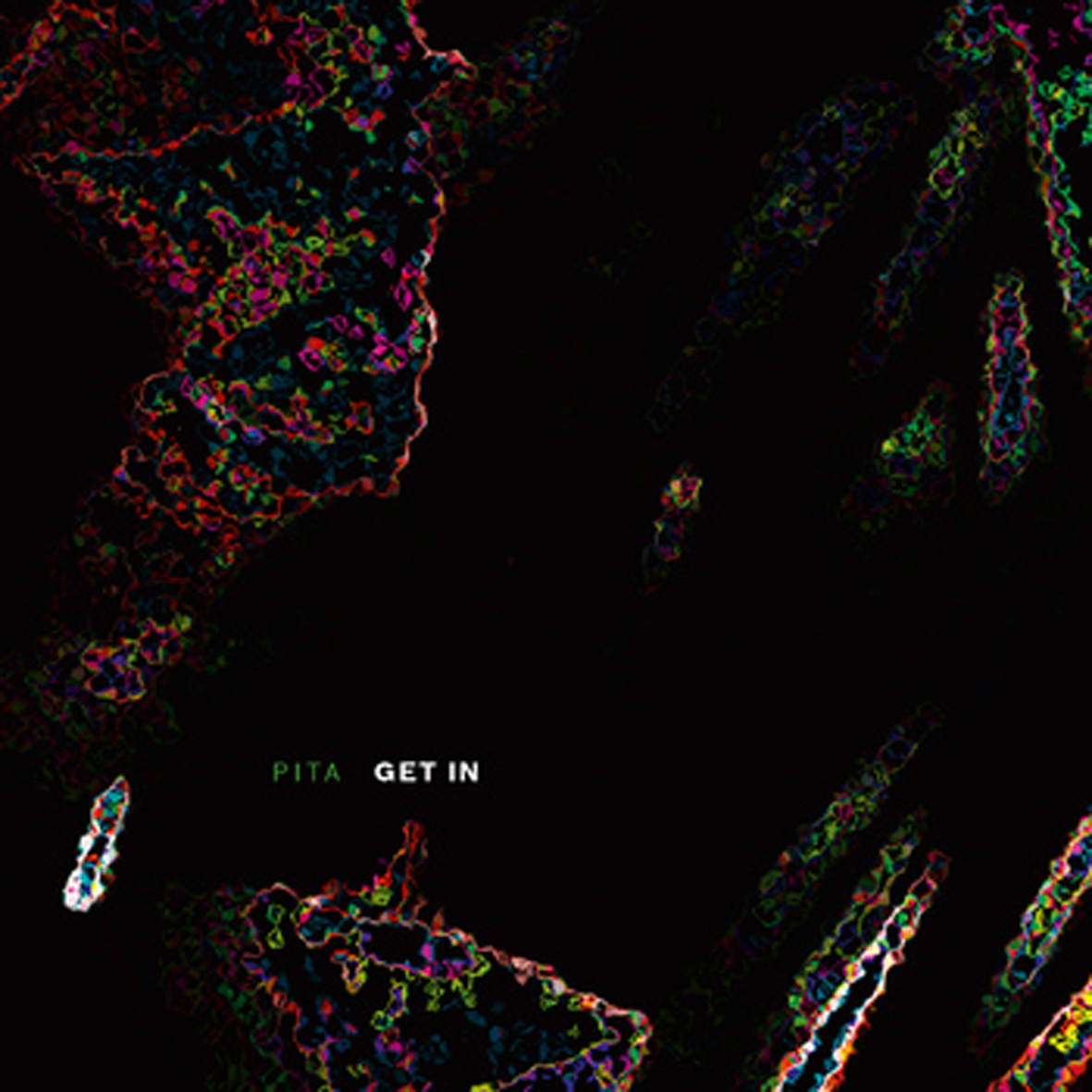 If history is any indication, it seems to be nearly impossible to simultaneously run a thriving record label and remain a vital and evolving artist: one side always has to suffer.  That said, Peter Rehberg has somehow managed to fare better than just about anybody, as Editions Mego remains one of the best experimental music labels on the planet and his current work with Shampoo Boy is excellent.  It has been a long time since Rehberg has released a significant solo album though and I was not all sure what to expect from Get In, as he was once at the absolute vanguard of electronic music and presumably always has the potential to be there again, but it does not seem like he has been swinging for the fences all the much lately.  As it turns out, Get In is indeed in no danger of redefining music or unlocking bold new vistas of artistic expression, but the consolation prize is that it is one of Rehberg's stronger and most consistent albums to date, showing that he is still every bit as capable of brilliance as ever.  Sometimes being good is a lot better than being first.
If history is any indication, it seems to be nearly impossible to simultaneously run a thriving record label and remain a vital and evolving artist: one side always has to suffer.  That said, Peter Rehberg has somehow managed to fare better than just about anybody, as Editions Mego remains one of the best experimental music labels on the planet and his current work with Shampoo Boy is excellent.  It has been a long time since Rehberg has released a significant solo album though and I was not all sure what to expect from Get In, as he was once at the absolute vanguard of electronic music and presumably always has the potential to be there again, but it does not seem like he has been swinging for the fences all the much lately.  As it turns out, Get In is indeed in no danger of redefining music or unlocking bold new vistas of artistic expression, but the consolation prize is that it is one of Rehberg's stronger and most consistent albums to date, showing that he is still every bit as capable of brilliance as ever.  Sometimes being good is a lot better than being first.
The first Peter Rehberg album that I ever picked up was 1999’s Get Out, which came out right around the same period that I was also discovering Christian Fennesz.  At the time, I mostly preferred Fennesz’s vision of laptop-fractured experimental guitar, but definitely loved Pita’s more visceral, noise-damaged aesthetic when he managed to balance out his digitized entropy with some melody.  The reason that I bring that up is because it seems like absolutely no time has passed at all for Rehberg between Get Out and Get In: he is still doing almost exactly the same thing, but he has definitely gotten quite a bit better at it.  Rehberg’s eternal commitment to the same vision that he had almost 20 years is kind of amazing, as he has since collaborated with many of the most distinctive and inventive guitarists in music (Fennesz, Jim O’Rourke, Steven O’Malley) and released an avalanche of adventurous work through Editions Mego in the ensuing years, yet none of that seems to have made a noticeable impact on his solo work.  However, I suppose a strong counterpoint might be that Rehberg was able to work with so many singular and influential artists precisely because he is one of them himself and he intends to stay that way.  Viewed in that light, Rehberg is not so much repeating himself as he is isingle-mindedly focused on perfecting his original vision whenever he finds the time to throw himself into it.  He indulges his more divergent impulses through his collaborations, I guess.
To my ears, he has already attained perfection at least twice previously with Get Out’s "Untitled 3" and Fenn O’Berg’s "Fenn O’Berg Theme," but one could argue that he had quite a bit of help in both cases (the former being ingeniously built upon an Ennio Morricone sample).  On Get In, Rehberg does all the heavy lifting himself and scales comparable heights in at least two cases.  The album's clear centerpiece is the absolutely gorgeous "Line Angel," as Rehberg weaves a lushly shimmering and rippling reverie, then artfully disrupts the idyll with dissonant and unexpected pitch shifts.  The following "S200729" is similarly stunning, as the initially unpromising synthpop-meets-the-blues groove unexpectedly explodes into a gloriously gnarled storm of howling noise at the halfway point.  The closing "MFBK" is also quite lovely, though it is a bit less distinctive than some of the other highlights, veering into warm, pastoral drone territory that is already well-covered by others.  Rehberg does it quite well though, enhancing his blissful swells with a groaning undercurrent and some effective added texture and sizzle.  The rest of the album is not necessarily weaker or less inspired, but the remainder of the pieces do tend to fall on the incidental or atmospheric ends of the spectrum, either providing bridges between the more substantial works or just offering a brief throbbing, brooding, or sizzling interlude to vary the mood and texture a bit.
As such, Get In's only truly substantial flaw is just that there is just not enough of it.  A good rule of thumb here is that anything longer than five minutes is excellent and anything less than that is not quite a fully formed piece.  There are not any notable exceptions to that at all.  Since there are only seven songs here, it is safe to say that Get In is at the very least a half-great album and probably even Rehberg’s most consistently solid solo release to date.  It may be unlikely to achieve the impact or influence of his earlier work, but that is only because everyone else eventually caught up: Peter Rehberg is still at the peak of his powers.
 
Read More
- Administrator
- Albums and Singles
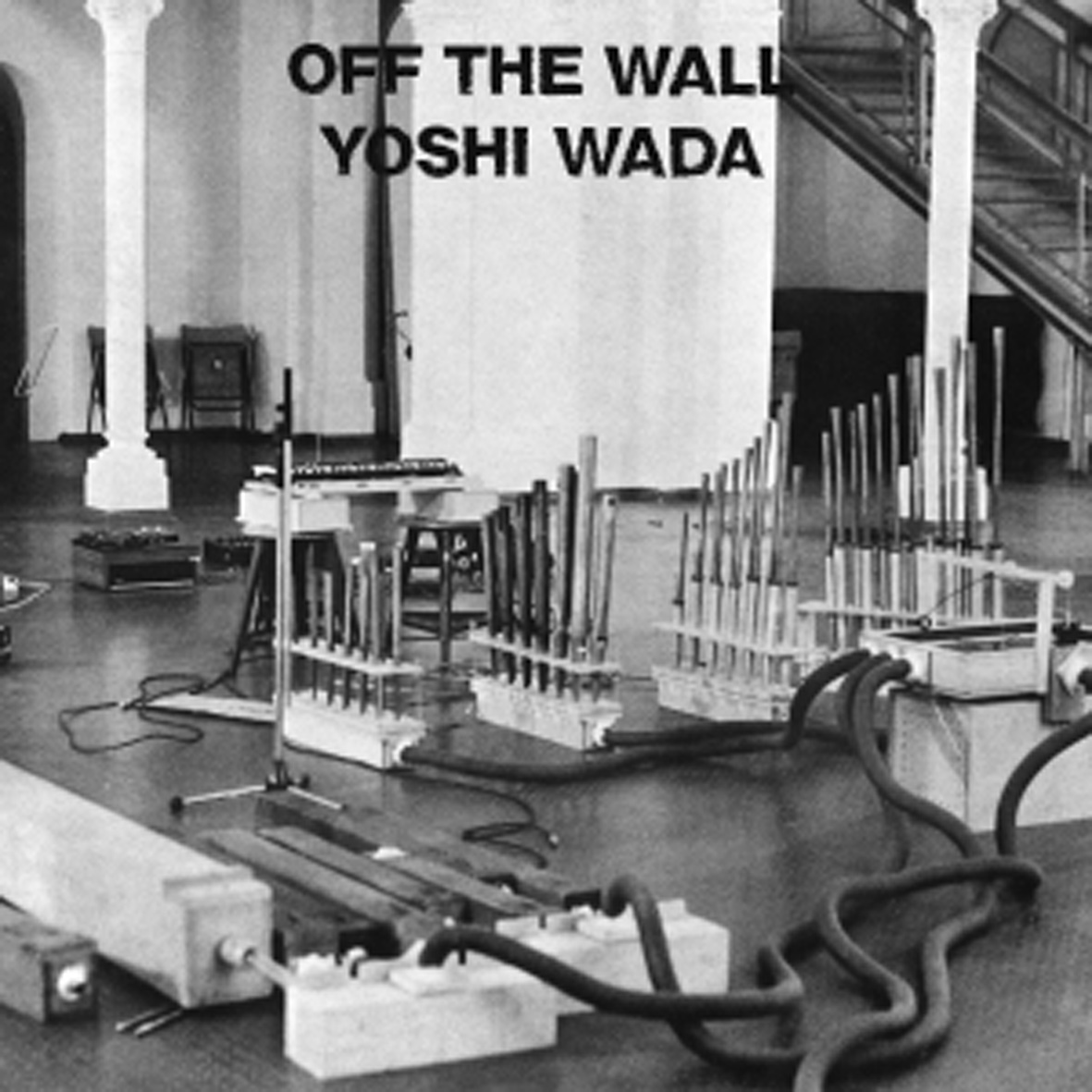 Newly reissued by his own Saltern imprint, 1985's Off the Wall takes its droll title from the rich acoustic properties of the Berlin studio that Wada was using as a practice space at the time.  While not quite crazy enough to warrant the more expected meaning of its title, this is definitely a very strange and ambitious album, as Wada’s small ensemble employed an arsenal of homemade bagpipes and organs to exploit the sonic properties of their surrounding architecture: the room guided the composition.  Unusual instrumentation and process aside, Off the Wall is also a curious anomaly stylistically, transforming the Eastern drone aesthetic of La Monte Young and Pandit Pran Nath into something resembling medieval Scottish free-jazz.  For better or worse, that is definitely a niche that does not get filled very often.
Newly reissued by his own Saltern imprint, 1985's Off the Wall takes its droll title from the rich acoustic properties of the Berlin studio that Wada was using as a practice space at the time.  While not quite crazy enough to warrant the more expected meaning of its title, this is definitely a very strange and ambitious album, as Wada’s small ensemble employed an arsenal of homemade bagpipes and organs to exploit the sonic properties of their surrounding architecture: the room guided the composition.  Unusual instrumentation and process aside, Off the Wall is also a curious anomaly stylistically, transforming the Eastern drone aesthetic of La Monte Young and Pandit Pran Nath into something resembling medieval Scottish free-jazz.  For better or worse, that is definitely a niche that does not get filled very often.
At first glance, Off the Wall is admittedly quite a tough sell (even by experimental music standards).  For one, I suspect that the audience for prolonged bagpipe freak-outs was quite small back in 1985 and it has likely not grown much since.  Though they certainly lend themselves nicely to drone-based music, bagpipes are fundamentally doomed to always be regarded as a definitively uncool instrument.  Secondly, this album’s very raison d'être is quixotically rooted in the acoustic properties of the room that it was recorded in.  The room that it is being played in (mine) is presumably very different, so much of the spatially dynamic and reverberant character of the performance has been lost or (at best) only partially conveyed by the recording.  Thankfully, I have a healthy appreciation for both futility and the perverse (a Japanese man in Germany building traditional Scottish instruments) and Off the Wall is bizarre enough to (mostly) work solely due to its brash, dissonant, and anachronistic compositional properties.  I still have absolutely no idea why Wada hand-built an organ especially for these recordings though, unless it was something as simple as "I want a pipe organ and I cannot possibly fit one through the door of my studio."  The bagpipes, however, were pre-existing, as instrument-building has long been one of Wada's many talents.
The album is split into two 20-minute halves that feel more like variations on the same piece rather than a single 40-minute piece that has been divided due to the constraints of the vinyl format.  The first side starts off innocently enough, as Wada's ensemble uses shifting bagpipe drones to create a complex, yet subtle cloud of overtones and oscillations.  Aside from the intentional overtones and the underlying organ, it is not a far cry from traditional Scottish music at all.  To my ears, Off the Wall is probably best (or at least most easily) appreciated as a kind of free-form fantasia on traditional Scottish music, as the timbre and melody of the bagpipes is nearly impossible to ignore, making the piece’s more subtle attributes very hard to focus on.  Gradually, however, Off the Wall delves into much stranger territory, as a hollow timpani groove kicks in and the ensemble's playing gets considerably more dissonant, erratic, and busy.  At times, it resembles a swarm of very annoying bees, but it occasionally opens up into calmer vistas, sometimes even resembling some sort of majestic and ceremonial court music.  The album’s second side essentially offers more of the same, as bagpipes are not well-known for their versatility.  Off the Wall basically has two modes: cacophonous squall and Scottish highlands drone.  For the most part, the latter aesthetic is the one that works best.
There are a number of frustrating elements to this album, but it is worth noting that almost none of them are what I would have anticipated.  For example, I would definitely expect 40 solid minutes of unrelenting avant-garde bagpipe music to grate on me. To some degree, I suppose it did, as this is not easy listening by any means.  However, my larger problem is that Off the Wall tries to cover too much stylistic territory within each single piece.  This would have been a much better album if Wada had, say, written some individual drone pieces and some individual free-form blow-outs.  There are some great moments of each throughout Off the Wall, but they do not coexist easily within the same composition.  Also, I could definitely do without the percussion, as the rolling timpani rhythms and cymbal flourishes give everything a very rigid and dated "classical music" feel.  They definitely do not add anything to the piece, whereas a good free-jazz drummer could have transformed the more frenzied bits into something considerably more volcanic.  I am not sure how available shit-hot jazz drummers were in 1980s Berlin, but even no drummer at all would have been better than the current situation.  My only guess is that percussion sounded much more thunderous in the acoustic environment of the studio than it does on record.  Nevertheless, Off the Wall does succeed in at least one major way: for better or worse, it is unlike anything else that I have heard.  I can definitely admire Wada’s boldly anachronistic and idiosyncratic vision, even if it was a flawed one.
 
 
Read More
- Administrator
- Albums and Singles

In the spring of 1968 a cargo ship was preparing to leave the port of Baltimore with an important shipment of musical instruments. Its final destination was Rio De Janeiro, where the EMSE Exhibition (Exposição Mundial Do Son Eletrônico) was going to be held.
It was the first expo of its kind to take place in the Southern Hemisphere and many of the leading companies in the field of electronic music were involved. Rhodes, Moog, Farfisa, Hammond and Korg, just to name a few, were all eager to present their newest synthesisers and other gadgets to a growing and promising South American market, spearheaded by Brazil and Colombia.
The ship with the goods set sail on the 20th of March on a calm morning and mysteriously disappeared from the radar on the very same day.
One can only imagine the surprise of the villagers of Cachaço, on the Sao Nicolau island of Cabo Verde, when a few months later they woke up and found a ship stranded in their fields, in the middle of nowhere, 8 km from any coastline. After consulting with the village elders, the locals had decided to open the containers to see what was inside – however gossip as scintillating as this travels fast and colonial police had already arrived and secured the area.
Portuguese scientists and physicians were ordered to the scene and after weeks of thorough studies and research, it was concluded that the ship had fallen from the sky. Finally, a team of welders arrived to open the containers and the whole village waited impatiently. The atmosphere, which had been filled with joy and excitement, quickly gave way to astonishment. Hundreds of boxes conjured, all containing keyboards and other instruments which they had never seen before: and all useless in an area devoid of electricity. Disappointment was palpable.
It is said that charismatic anti-colonial leader Amílcar Cabral had ordered for the instruments to be distributed equally in places that had access to electricity, which placed them mainly in schools. This distribution was best thing that could have happened - keyboards found fertile grounds in the hands of curious children, born with an innate sense of rhythm who picked up the ready-to-use instruments. This in turn facilitated the modernisation of local rhythms such as Mornas, Coladeras and the highly danceable music style called Funaná, which had been banned by the Portuguese colonial rulers until 1975 due to its sensuality!
The observation was made that the children who came into contact with the instruments found on the ship inherited prodigious capabilities to understand music and learn instruments. One of them was the musical genius Paulino Vieira, who by the end of the 70s would become the country ́s most important music arranger.
8 out of the 15 songs presented in this compilation had been recorded with the backing of the band Voz de Cabo Verde, lead by Paulino Vieira, the mastermind behind the creation and promulgation of what is known today as “The Cosmic Sound of Cabo Verde.”
More information can be found here.
Read More
- Administrator
- Albums and Singles
 Thanasis Kaproulias’ latest release as Novi_sad expands on the compositional strategies found on his last work (2013’s Neuroplanets) but goes a step further both in concept and presentation. The single piece that makes up the audio portion of this multimedia work is first made up of sound provided by other well known sound artists, such as Richard Chartier and Carl Michael von Hausswolff. Not satisfied with that, however, Kaproulias then merges these with decidedly non-musical recordings (bridge vibrations, earthquakes, stethoscopes, etc.), and then further processes them with quantitative data from major financial crises. Decidedly high concept (and accompanied by a hardcover book featuring visualizations of the sound by Ryoichi Kurokawa), Sirens excels on both a conceptual and purely sonic level.
Thanasis Kaproulias’ latest release as Novi_sad expands on the compositional strategies found on his last work (2013’s Neuroplanets) but goes a step further both in concept and presentation. The single piece that makes up the audio portion of this multimedia work is first made up of sound provided by other well known sound artists, such as Richard Chartier and Carl Michael von Hausswolff. Not satisfied with that, however, Kaproulias then merges these with decidedly non-musical recordings (bridge vibrations, earthquakes, stethoscopes, etc.), and then further processes them with quantitative data from major financial crises. Decidedly high concept (and accompanied by a hardcover book featuring visualizations of the sound by Ryoichi Kurokawa), Sirens excels on both a conceptual and purely sonic level.
Even with all of the extrapolation of sound performed by Kaproulias, the artists who supplied the raw material have their own distinct representation as well.The first segment, featuring Richard Chartier, seems to draw on his depressant electronic synth haze of his Pinkcourtesyphone project.His contribution of what sounds like rumbling, deconstructed synth chords may differ greatly from the buzzing electrical surges and low frequency drones provided by Carl Michael von Hausswolff, but the two are effortlessly blended together.
Kaproulias then reforms the sound from Jacob Kirkegaard with recordings of earthquake vibrations into the third movement of Sirens.The low frequency surges capture the quaking land very well, as Kirkegaard’s work is pulled apart into digital interference, churning bass, buzzing insects, and just a general array of bizarre sounds scattered about, sputtering out into a satisfying conclusion. The reworking of Helge Sten’s material takes on a metallic, noisy sheen of frequency modulated synthesizers.Below this surface, Kaproulias builds a sinister sounding, bleak underlayer of sound that eventually subsumes what musicality may have been present into an abyss of darkness and dissonance.
The final portion is perhaps the most surprising.Consisting of solo cello performance by Beckie Foon, the inorganic sounds (recordings from electronic stethoscopes and data from the October 1987 "Black Monday" stock market crash, the treatments are extremely minimal.It sounds as if the additional information was used only to create and modify reverbs or dynamics, resulting in a subtle, yet ghostly tinge that envelopes the entire piece.The result is a surprisingly pure and traditionalist conclusion to an otherwise complex and concept heavy composition.
Besides the excellent sound, visual artist Ryoichi Kurokawa’s work that accompanies the music of Sirens makes for a brilliant co-presentation.He uses the audio data (with timestamps provided in the images) to generate abstract visions, blended with conventional images.The result are striking images of sonic, granular clouds, shaped into images of animals, landscapes, and people that mesh the familiar with the abstract.
Novi_sad’s work has been showing drastic steps in evolution and complexity since his debut just shy of a decade ago.That evolution is a striking one, moving from the more traditional processing and reassembling of prerecorded sounds and samples into a compositional method that applies non-musical and statistical data as an additional element.Even as a piece of music, without any knowledge of its underlying structure, concept, or visual accompaniment, Sirens would be an extremely impressive work.With all of those additional trappings, it becomes all the more magnificent and fascinating when taken as its intended, fully multimedia approach.
samples:
 
Read More
- Administrator
- Albums and Singles
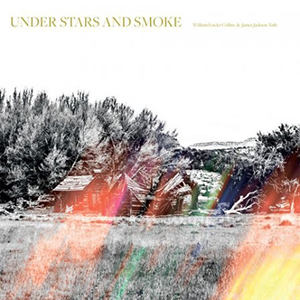 The rural areas from which William Fowler Collins and James Jackson Toth hail have an inescapable influence on this new collaborative record. Across the three pieces that make up Under Stars and Smoke it is impossible to not hear the ambient desolation of Collins’ New Mexico home, while Kentucky’s own Toth provides unsettling Appalachian folk-tinged guitar and vocals. The two styles meld together perfectly, and with an appropriately challenging approach to production and aesthetic, it is a powerful entry in both artists’ already impressive catalogs.
The rural areas from which William Fowler Collins and James Jackson Toth hail have an inescapable influence on this new collaborative record. Across the three pieces that make up Under Stars and Smoke it is impossible to not hear the ambient desolation of Collins’ New Mexico home, while Kentucky’s own Toth provides unsettling Appalachian folk-tinged guitar and vocals. The two styles meld together perfectly, and with an appropriately challenging approach to production and aesthetic, it is a powerful entry in both artists’ already impressive catalogs.
The barren, sunbleached sands of New Mexico appear in sonic form immediately on the expansive introduction to "The Border".Elongated passages of bleak guitar tone are layered subtly, with occasional shifts in tone mimicking the errant desert mirage.Toth's guitar and vocals eventually come into focus, a sound that is simultaneously reminiscent of monastic chanting and country tinged revival bluegrass.His strained, intentionally thin voice adds to the creepiness factor that is already strongly in play before the icy sound is pulled apart by the duo into grinding guitar noise dissonance.
Connecting the two lengthy pieces that open and close this record is the brief "The Memorial".The song stands alone with a very different sense of composition, with a focus on quiet rumbling percussion that is far in the distance, enough to be disconcerting in its ambiguity.Collins and Toth keep the dynamic sparse and hushed, even as they push the composition into a more commanding wall of glistening processed sound for its conclusion.
The final piece, the 17 minute "The Man Who Could Not Stay" abandons the subtleties and instead opens abruptly with buzzing, noisy electronics and more overt electronic guitar squall.Just as quickly it fades back into more acoustic passages, with the duo returning to the more obvious electric guitar vibrations.There is a significant amount of effects here, but the sound is quite clearly that of a guitar, blending the more commanding notes with the space in which they are allowed to resonate.
Toth's vocals reappear amidst the guitar and what resembles the sparsest of field recordings.Buried low and hard panned, his voice sounds disconnected and isolated, made all the more pronounced via heavy echoes applied to it.The piece evolves and changes throughout the long duration, melding electrics, guitar, and vocals in different configurations that hint at both ambient noise and country-tinged folk, but never settle comfortably into either framework.
While the two different landscapes that James Jackson Toth and William Fowler Collins conjure via their work on Under Stars and Smoke, they complement each other wonderfully.Both may also have roots in the folk and drone metal scenes as well (respectively), and they bring those sensibilities to this record, the final product stands on its own as a singularly unique, bleak, but also gripping record that excels in its ambiguity and mystery.
samples:
 
Read More
- Administrator
- Albums and Singles

Dominions is the second full-length release from Canadian electroacoustic composer Sarah Davachi, following 2015’s Barons Court. A slightly more demure approach is at work here, shifting from the brooding textures of her previous work to softer tones and more delicate movements in structure, as in side openers "Feeler" and "Ordinal." Recorded primarily at her home base in Vancouver, Davachi returns with her typical assembly of electronic equipment, mostly consisting of vintage synthesizers as well as the Orchestron, a rare optical sampler known for its low fidelity charms. The five compositions on this release breathe new life into these obsolete machines, pausing only for the stringed cacophony of the album’s closer. Melodics emerge almost as an after thought, suggesting something farther and more distant, echoed in the disjointed imagery of local artist, Daniel Presnell.
More information can be found here.
Read More

